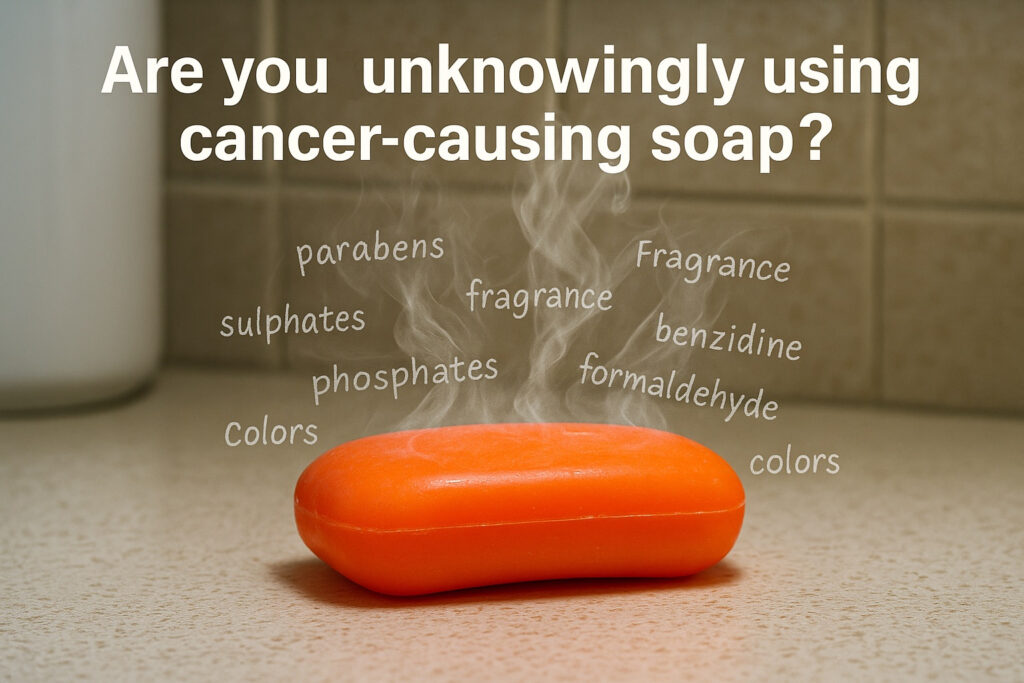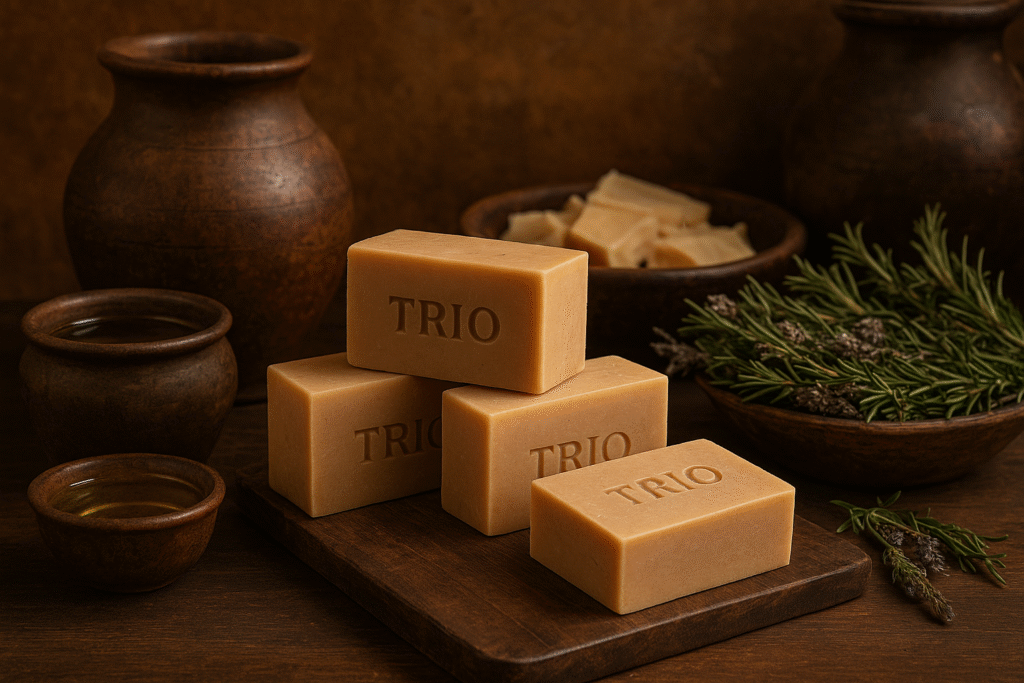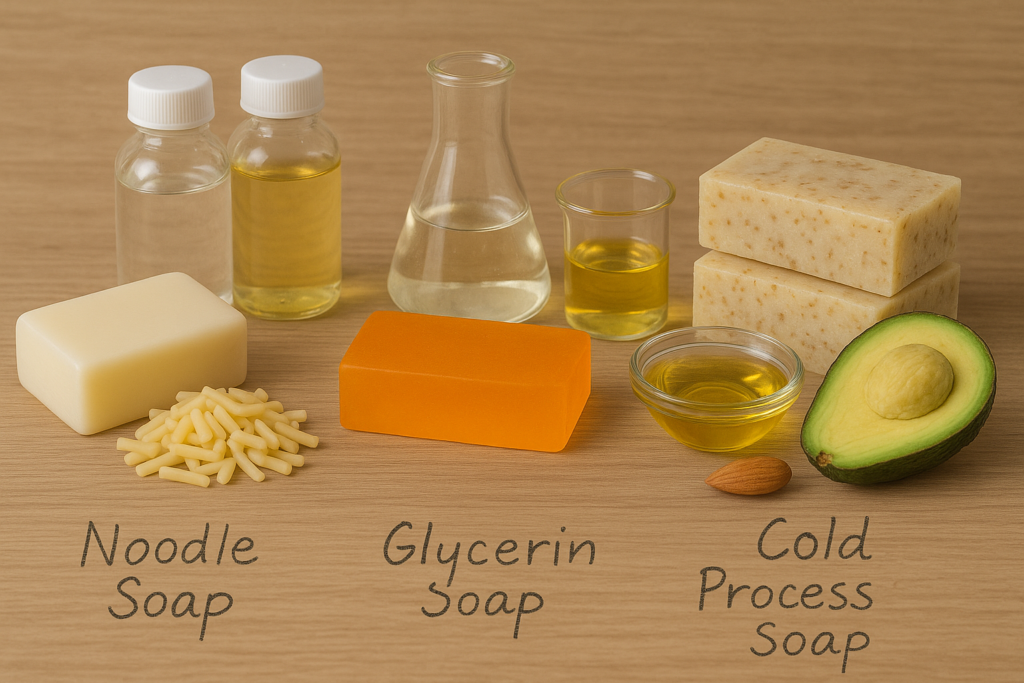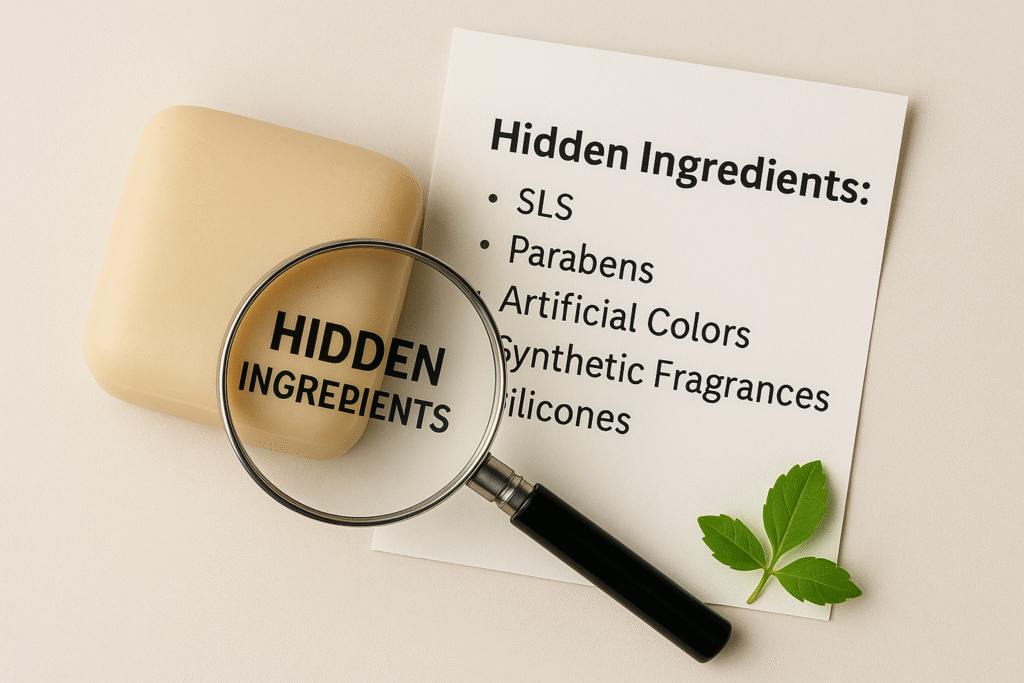Are You Using Cancer-Causing Soap?
Soap is essential for personal hygiene, but could your daily soap be quietly harming your health? Discover the four harmful categories of ingredients linked to cancer risk.

Table of Contents
- Introduction
- 1. Artificial Fragrances
- 2. Synthetic Colors
- 3. Chemical Preservatives
- 4. Harsh Surfactants
- How to Protect Yourself
- Take Action Today
Introduction
Soap is essential for personal hygiene, but could your daily soap be quietly harming your health? Surprisingly, many commercial soaps contain ingredients linked to cancer, especially with prolonged use. Let’s understand the four dangerous ingredient categories found in soaps and how they can pose cancer risks.
1. Artificial Fragrances
Problem: Synthetic fragrances often contain phthalates, known endocrine disruptors linked to breast and reproductive cancers when exposure is prolonged.
Artificial fragrances make soaps appealing, but these synthetic fragrances often contain harmful chemicals like phthalates. Phthalates are known endocrine disruptors that can interfere with hormone functions and have been associated with increased risk of breast and reproductive cancers upon prolonged exposure.
Phthalate Exposure and Breast Cancer Incidence: A Danish Case–Control Study (PMC)
2. Synthetic Colors
Problem: Dyes derived from coal tar or petroleum—such as FD&C Red 40, Yellow 5, Blue 1—can contain benzidine and other carcinogens, increasing bladder and skin cancer risk.
Attractive colors in soaps come from synthetic dyes, often derived from coal tar or petroleum. Many artificial colors (e.g., FD&C Red 40, Yellow 5, Blue 1, Color Index (CI) codes like CI 12490) contain benzidine and other carcinogens. Long-term exposure can significantly elevate the risk of bladder cancer, skin cancer, and cause allergic reactions. More details in this blog.
Benzidine and Dyes Metabolized to Benzidine – NCBI Bookshelf
3. Chemical Preservatives
Problem: Preservatives like parabens, DMDM hydantoin, diazolidinyl urea, and imidazolidinyl urea release formaldehyde, a known carcinogen linked to leukemia, nasopharyngeal, and skin cancers.
To extend shelf-life, soaps use chemical preservatives such as parabens, DMDM hydantoin, diazolidinyl urea, and imidazolidinyl urea. These ingredients slowly release formaldehyde, a chemical identified as carcinogenic by the International Agency for Research on Cancer (IARC). Prolonged skin exposure can increase risks for nasopharyngeal cancer, leukemia, and skin cancers.
Minireview: Parabens Exposure and Breast Cancer (PMC)
4. Harsh Surfactants
Problem: SLS and SLES boost lather but manufacturing of SLES can introduce 1,4-Dioxane, a hidden carcinogen linked to breast, liver, and kidney cancers.
Surfactants like Sodium Lauryl Sulfate (SLS) and Sodium Laureth Sulfate (SLES) help soap lather effectively. However, the manufacturing process of SLES often introduces 1,4-Dioxane, a hidden carcinogen. According to the Environmental Protection Agency (EPA), 1,4-Dioxane exposure has been linked to breast, liver, and kidney cancers after prolonged use.
Risk Evaluation for 1,4-Dioxane | U.S. EPA
1,4-Dioxane – 15th Report on Carcinogens (NCBI)
How to Protect Yourself from Cancer-Causing Soap Ingredients
1. Choose Clearly Labeled Products
Opt for soaps explicitly marked as free from synthetic fragrances, dyes, harsh surfactants, and chemical preservatives.
2. Insist on Full Ingredient Transparency
Many brands conveniently disclose only “star” or “key” ingredients, hiding potentially harmful chemicals behind marketing-friendly labels. Always select brands that provide a complete, transparent list of all ingredients used. This ensures you’re not unknowingly exposing yourself to hidden carcinogens.
3. Prefer Cold Process Soaps
Handmade, cold-processed soaps crafted from natural oils, botanical extracts, and essential oils generally avoid synthetic chemicals, significantly reducing carcinogenic risks.
4. Stay Educated
Regularly check labels and ingredient lists to stay informed and protect your health.
Take Action Today
Switch to Safe Soaps: Explore our curated collection of fully transparent, toxin-free TRiO soaps at trionaturals.com/shop and make the healthier choice for your skin.
Share & Amplify: Help spread awareness—share this post on Facebook, Instagram, or WhatsApp(+91 82772 14722) using #SafeSoapMovement and tag friends who care about clean, chemical-free skincare.
Join the Conversation: Have questions or a favorite natural soap brand to recommend? Leave a comment below—we love hearing your stories and tips!
Let’s work together to eliminate hidden toxins from our daily routines—one bar of soap at a time.



